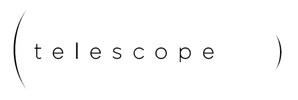Ma Qingyun
Lite-urbanism
Ma Qingyun, considered to be one of the most influential designers and architects in the world, presents new sculptures of pink neon entitled Lite-urbanism. Ma suggests a new urbanism by reducing form and function to simple calligraphic lines in the fragile light of neon. These works, “whimsical” yet “alien,” are based on Ma’s un-built architectural projects. Perhaps it is fitting that this work is based on ideas for buildings and not the buildings themselves, as impermanence is extremely important in Ma’s philosophy and in Chinese culture in general. Ma states that Confucius basically said, “It’s gone. It’s gone,” that all in life is impermanent and that life itself is a flow, in flux, you cannot hold onto anything. Architecture is based on strength and long-term stability, but in Eastern thought it is understood that ‘everything’ changes. The west is obsessed with preservation of all they have built, while the east allows for decay and ultimately replacement. Ma asks the question, should we consider “temporary buildings instead of eternal monuments?” For Ma, to move from massive city planning and large scale building projects to a small non profit art space in an old massage parlor in Cao Chang Di, and from powerful architectural materials to fragile tubes of glass filled with pink ether is a testament to his basic creative philosophy. Ma states, “In the end, for me, architecture is not about buildings, it is actually about creating everything, that environment can be anything or everything; a conversation even,” or an ephemeral line of glass in space.
In Telescope Ma has installed several one-foot square aluminum box neon signs. They are small in scale, the lights are fragile and thin, but their hot pink glow dominates the room from floor to ceiling and fills the air. They are abstract, adaptable, and have the power of “swiftness” states Ma. Stepping into the room it is easy to lose your breath and sense of place and time as you are suddenly enveloped in pink light. The sensation is profound, mysterious, and indescribable. It has the strange allure of a siren, a beauty that is irresistible, but alien and possibly dangerous. This is a new place where identities are challenged and boundaries and traditions are broken. A place where you don’t know what comes next? Lite urbanism represents a new city, one that can be turned on and off as needed, adapts swiftly to the changing needs and desires of the city. It is a new non-substantial, non-obstructive, yet pervasive city. Lite Urbanism at Telescope is just the beginning to Ma’s vision of the future, to make an entire city of these lights. “A city of never built projects, a space of ever flowing energy, whenever, wherever and however, “ proclaims Ma. Lite urbanism sprawl is headed your way.
马清运
《淡城市》
马清运被认为是世界上最有影响力的设计师和建筑师之一,他展出的新雕塑作品由粉色霓虹组成,题为《清淡的城市主义》(Lite-urbanism)。通过将形式与功能简化为微弱霓虹灯光下单纯的书法线条,马清运暗示了一种新的城市主义。这些作品既“异想天开”又“格格不入”,它们是基于马清运那些未建起的建筑项目。作品以关于建筑物的想法而非建筑物本身为基础,这或许正恰如其分,因为不管是在马清运的哲学中还是总体说来在中国文化中,无常都是极为重要的概念。马清运陈述道,孔子的话基本上是在说“去也。去也,”生命中的所有皆是无常,而生命本身是流动的,处于不断的变化当中,你无法抓紧任何东西。建筑的基础是强度与长期的稳定性,但在东方思想中,人们的理解是“一切”都会改变。西方迷恋于保存他们已经建立起来的所有,而东方则容许衰败与终极替换的发生。马清运提出这样一个问题,我们是否应当考虑“临时的建筑物而非永恒的纪念碑?”对马清运而言,从庞大的城市规划和大规模建筑项目中迁移出来,进入草场地一个由旧按摩店改成的小型非盈利艺术空间,并且从强力的建筑材料转向脆弱的、填满粉色乙醚的玻璃管,是对于他基本创作哲学的一种证明。马清运说,“最终,对我而言,建筑不是关于建筑物的,它实际上是关于创造一切,其环境可以是任何事物或一切事物;甚至一段谈话,”或是空间中一道昙花一现的玻璃线。
在望远镜,马清运安装了几个一尺见方的铝盒霓虹标示牌。它们尺寸很小,光线微弱稀薄,但火热的粉色光辉笼罩着从地面到天花板的整个房间,并弥漫于空气中。它们抽象、灵活,且具有“迅捷”的力量,马清运说道。走进这个房间,你会很容易忘记呼吸以及对地点与时间的概念,因为你忽然之间被粉色光线包围了。那种感觉是强烈、神秘而难以形容的。它具有一种奇怪的诱惑力,像塞壬,一位令人难以抗拒的美人,却陌生,可能还很危险。在这个新地方,身份受到挑战,界线与传统被打破。这是一个你不知道接下来会发生什么的地方。《清淡的城市主义》代表了一种新的城市,它可以依据所需打开和关闭,快速适应城市里变化着的需求和欲望。它是一种无实质、无阻碍但却无所不在的城市。在望远镜展出的《清淡的城市主义》只是一个起点,马清运对于未来的展望是用这些光线建造一整个城市。“一个充满永不建造出来的项目的城市,一个充盈着永远流动的能量的空间,无论何时,无论何地,无论如何,”马清运如此宣明。《清淡的城市主义》的蔓生物正朝你走来。
Lite-urbanism
Ma Qingyun, considered to be one of the most influential designers and architects in the world, presents new sculptures of pink neon entitled Lite-urbanism. Ma suggests a new urbanism by reducing form and function to simple calligraphic lines in the fragile light of neon. These works, “whimsical” yet “alien,” are based on Ma’s un-built architectural projects. Perhaps it is fitting that this work is based on ideas for buildings and not the buildings themselves, as impermanence is extremely important in Ma’s philosophy and in Chinese culture in general. Ma states that Confucius basically said, “It’s gone. It’s gone,” that all in life is impermanent and that life itself is a flow, in flux, you cannot hold onto anything. Architecture is based on strength and long-term stability, but in Eastern thought it is understood that ‘everything’ changes. The west is obsessed with preservation of all they have built, while the east allows for decay and ultimately replacement. Ma asks the question, should we consider “temporary buildings instead of eternal monuments?” For Ma, to move from massive city planning and large scale building projects to a small non profit art space in an old massage parlor in Cao Chang Di, and from powerful architectural materials to fragile tubes of glass filled with pink ether is a testament to his basic creative philosophy. Ma states, “In the end, for me, architecture is not about buildings, it is actually about creating everything, that environment can be anything or everything; a conversation even,” or an ephemeral line of glass in space.
In Telescope Ma has installed several one-foot square aluminum box neon signs. They are small in scale, the lights are fragile and thin, but their hot pink glow dominates the room from floor to ceiling and fills the air. They are abstract, adaptable, and have the power of “swiftness” states Ma. Stepping into the room it is easy to lose your breath and sense of place and time as you are suddenly enveloped in pink light. The sensation is profound, mysterious, and indescribable. It has the strange allure of a siren, a beauty that is irresistible, but alien and possibly dangerous. This is a new place where identities are challenged and boundaries and traditions are broken. A place where you don’t know what comes next? Lite urbanism represents a new city, one that can be turned on and off as needed, adapts swiftly to the changing needs and desires of the city. It is a new non-substantial, non-obstructive, yet pervasive city. Lite Urbanism at Telescope is just the beginning to Ma’s vision of the future, to make an entire city of these lights. “A city of never built projects, a space of ever flowing energy, whenever, wherever and however, “ proclaims Ma. Lite urbanism sprawl is headed your way.
马清运
《淡城市》
马清运被认为是世界上最有影响力的设计师和建筑师之一,他展出的新雕塑作品由粉色霓虹组成,题为《清淡的城市主义》(Lite-urbanism)。通过将形式与功能简化为微弱霓虹灯光下单纯的书法线条,马清运暗示了一种新的城市主义。这些作品既“异想天开”又“格格不入”,它们是基于马清运那些未建起的建筑项目。作品以关于建筑物的想法而非建筑物本身为基础,这或许正恰如其分,因为不管是在马清运的哲学中还是总体说来在中国文化中,无常都是极为重要的概念。马清运陈述道,孔子的话基本上是在说“去也。去也,”生命中的所有皆是无常,而生命本身是流动的,处于不断的变化当中,你无法抓紧任何东西。建筑的基础是强度与长期的稳定性,但在东方思想中,人们的理解是“一切”都会改变。西方迷恋于保存他们已经建立起来的所有,而东方则容许衰败与终极替换的发生。马清运提出这样一个问题,我们是否应当考虑“临时的建筑物而非永恒的纪念碑?”对马清运而言,从庞大的城市规划和大规模建筑项目中迁移出来,进入草场地一个由旧按摩店改成的小型非盈利艺术空间,并且从强力的建筑材料转向脆弱的、填满粉色乙醚的玻璃管,是对于他基本创作哲学的一种证明。马清运说,“最终,对我而言,建筑不是关于建筑物的,它实际上是关于创造一切,其环境可以是任何事物或一切事物;甚至一段谈话,”或是空间中一道昙花一现的玻璃线。
在望远镜,马清运安装了几个一尺见方的铝盒霓虹标示牌。它们尺寸很小,光线微弱稀薄,但火热的粉色光辉笼罩着从地面到天花板的整个房间,并弥漫于空气中。它们抽象、灵活,且具有“迅捷”的力量,马清运说道。走进这个房间,你会很容易忘记呼吸以及对地点与时间的概念,因为你忽然之间被粉色光线包围了。那种感觉是强烈、神秘而难以形容的。它具有一种奇怪的诱惑力,像塞壬,一位令人难以抗拒的美人,却陌生,可能还很危险。在这个新地方,身份受到挑战,界线与传统被打破。这是一个你不知道接下来会发生什么的地方。《清淡的城市主义》代表了一种新的城市,它可以依据所需打开和关闭,快速适应城市里变化着的需求和欲望。它是一种无实质、无阻碍但却无所不在的城市。在望远镜展出的《清淡的城市主义》只是一个起点,马清运对于未来的展望是用这些光线建造一整个城市。“一个充满永不建造出来的项目的城市,一个充盈着永远流动的能量的空间,无论何时,无论何地,无论如何,”马清运如此宣明。《清淡的城市主义》的蔓生物正朝你走来。
